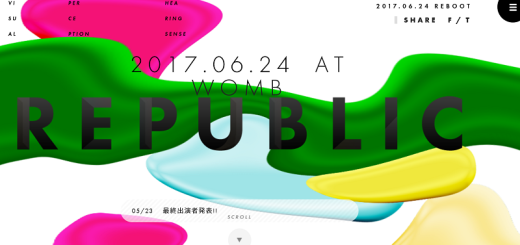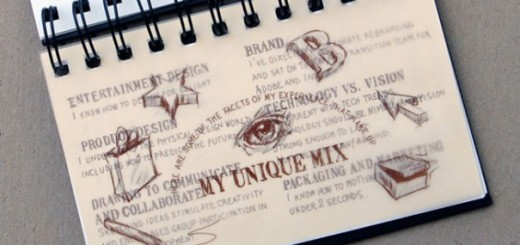4 Essential Tips for Effective Visual Branding
0When a new company is just getting off the ground, they often have so many things to juggle that questions of branding and visual identity fall by the wayside. Even established brands can lose sight of their visual identity when delivering on everyday content needs.
But establishing a visual brand identity for your company shouldn’t be treated like an obligation. Rather, it’s an opportunity to clearly articulate how you want to put your brand in front of audiences and customers in a way that both represents you well and achieves your goals.
Without clear visual branding guidelines in place, the marketing content you produce is likely to lack cohesion — and without consistency, it’s downright impossible to drive the brand recognition you need to succeed. What’s more, that content may not really be taking your business objectives into account.
 So whether you’re establishing your brand for the first time or overdue for a rebrand, let’s take a look at 4 essential elements of a results-driven visual brand identity.
So whether you’re establishing your brand for the first time or overdue for a rebrand, let’s take a look at 4 essential elements of a results-driven visual brand identity.
What Is a Visual Brand Identity?
Brand identity encompasses all the visual elements of your brand, from your logo to your color palette and everything in between. To develop a strong brand identity, you will need to have a clear definition of your business objectives and your target audience — all part of the brand strategy development process.
Once you know your goals, you’ll be able to define what channels you want to be active on and develop specific campaigns around those goals. And when you know who your target audience is, you can determine what types of visual content and messaging will be most appealing and engaging for them.
When developing the branding and visual identity for your brand, you’ll want to make sure to develop the following:
- Logo
- Brand typography
- Color palette
- Design style as it pertains to:
- Icons
- Illustrations
- Photography
- Video and animation
- Data visualization
- Interactive and web elements
All along the way, keep checking to ensure that the decisions you’re making all serve your defined goals and audiences.
Visual Branding Elements
Let’s take a look at each of these elements in more detail.
Logo
Your logo is one of the most fundamental expressions of your brand. It doesn’t just communicate what you do, but also what you value, as well as the value you can deliver for your customers.
The Parkinson’s Foundation offers a great example of a logo that does a lot of work while remaining elegant and simple. The logo not only resembles a “P” and “D” for Parkinson’s disease — it evokes a speech bubble, which speaks to one of the foundation’s core missions of raising awareness. In fact, the Parkinson’s Foundation encourages people to write personal messages within the speech bubble.
All of this is a lot to pack into a single image. So when you’re developing your own logo, it’s usually a good idea to consult with an agency that specializes in logo design. Remember, your logo is going to be one of your most commonly used pieces of visual content. It will come to symbolize your brand for many audiences and customers. If it fails to communicate your ideals and speak to your goals, that failure might translate into very real losses.
Brand typography
The typography guidelines for a typical brand include a mixture of complementary typefaces with clearly defined roles. Certain typefaces may be used for headlines or subheads only while others may be reserved for body copy. Different weights and styles within each typeface — the use of bold or italics, for example — may be included or excluded from your list of approved brand fonts. All of these decisions are made on the basis of what will provide the greatest utility for your brand and how these typefaces will work in tandem to communicate an overall look and feel.
When selecting your typefaces, you’ll also want to determine whether to use open-source fonts. Open-source options such as Google Fonts are guaranteed to be web-friendly and widely available, which makes it easier to stay on brand across every channel. At the same time, however, these may feel overly familiar or generic. If that proves to be a hindrance for your brand, you might opt for primary fonts that you can purchase, or you may even choose to custom-design a font for your brand. You’ll just want to make sure you understand the complete ramifications of these choices up front.
Color palette
When you’re developing a color palette for your brand, your primary objective is to develop something that will connect with your audiences and tell them who you are and what to feel about your brand. A foundation in the science of color as well as color psychology is fundamental here, especially when trying to navigate the huge volumes of sometimes-conflicting information on these topics. A visual strategy agency will be particularly equipped to recommend the best solutions for your unique brand.
Nonetheless, you probably have some intuitions about what kinds of colors work best with what kinds of brands. While yellow and orange might communicate fun and light-heartedness (think McDonald’s), blues and neutral colors might be associated with more B2B and serious brands (think the Parkinson’s Foundation, which we discussed above).
Developing a list of preferred colors isn’t enough. You’ll want to identify primary and secondary colors based on their frequency of usage. You’ll also need to determine when and how to use the colors in relation to one another. For example, maybe your brand pink should never touch the blue because those two colors vibrate when in contact with each other.
You might also include an accent or highlight color that is used only rarely, for CTA buttons or to highlight specific messaging.
Your color usage guidelines may even encompass what types of colors you can and can’t use as a background color on a web page or other visual asset. There might be specifications on when and how they’re used in character or other illustrations, or when overlaid onto photography or video footage.
Your visual communication partner will be able to anticipate most potential use cases and define the best applications of your brand colors in a broad variety of situations. Having these comprehensive visual branding guidelines in place before you start creating content doesn’t just ensure consistency — it eases the design process later, as in most cases, the important design decisions will already be made for you. Then, all you have to do is execute.
Design Style
Design style encompasses a huge variety of visual branding decisions and considerations that are unique to your business needs and your brand. When it comes to this section of your brand book, no organization is the same.
For instance, while one brand — Airbnb, for example — may rely heavily on photography, other brands — like Dropbox — may rely almost exclusively on illustration. Other organizations combine the use of both. What’s right for your organization is determined by your product and/or service as well as your goals. Customers of Airbnb of course want to see photos of the places they’ll be visiting and staying. Customers of Dropbox probably don’t want to see photos of the organization’s army of servers, so instead, Dropbox communicates an aspirational, creative tone that channels all you can achieve with their help.
While there are few universals, most brands incorporate icons to at least some degree. That’s because icons can so quickly and effectively communicate simple concepts. They can offer a list of your products or services at a glance. Or they can be used in how-to guides to help walk people through the steps. Considering that visuals communicate 60,000 times faster than words, icons are often much more powerful than text.
For illustrations, icons, and data visualizations, you’ll want to define a style that’s consistent and that channels your values. Quirky, exaggerated character illustrations deliver a very different tone and message than naturally proportioned figures with minimally defined features. You might have specific guidelines on how to make character illustrations inclusive, as in the case of the National Endowment for the Arts, or you may decide not to include character illustrations at all in your brand.
When it comes to photography, there may be particular types of images you choose to feature or avoid. You’ll need to decide whether you’ll use stock photography, and if so, in what cases. And many brands develop specific filters or photo-editing guidelines to give all their photographs a consistent tone.
And in a world where more and more organizations are developing videos, motion graphics, and interactive infographics and web content, you’ll need to define ways these mediums can complement and elevate your brand.
Ready to Build Your Visual Brand Identity?
We’ve touched upon the four most essential elements of any brand identity. But with each element comes a slew of questions you’ll need to answer, and having a clearly defined brand strategy will help you address those questions. That way, you can ensure that your visual branding sets you up for long-term business success.




